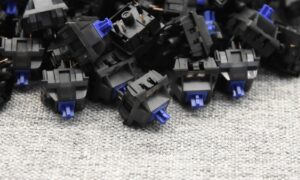Vacuum ejector pump is an essential device used in various industries to create and maintain a vacuum using compressed air, making it a powerful and efficient tool for countless applications. From manufacturing and packaging to robotics and chemical processing, vacuum ejector pumps offer a reliable, low-maintenance solution for generating suction without moving parts. In this article, we’ll explore how these pumps work, their advantages, and why they’re a preferred choice in modern industrial systems.
What Is a Vacuum Ejector Pump?
A vacuum ejector pump is a device that makes a vacuum (lower pressure than the surrounding air) without any moving parts. It works by using a fast-moving fluid to pull out gases or vapors. It’s also known as a jet pump or Venturi pump.
How It Works
The ejector pump works using the Venturi effect: When a fluid moves quickly through a narrow passage, its pressure drops. This drop in pressure draws in nearby gas, creating suction.
Main steps:
- Motive fluid enters – Steam, air, or water is forced through a nozzle at high pressure.
- Suction happens – The fast jet creates a low-pressure zone that pulls in surrounding gas.
- Mixing and exhaust – The motive fluid and gas mix, slow down in a diffuser, and are released at a higher pressure.
Example:
A steam ejector uses steam to suck air or vapor out of a chamber, then condenses the steam afterward.
Types of Vacuum Ejector Pumps
Vacuum ejector pumps are broadly classified into two main types based on the driving fluid: air ejectors and steam ejectors. Both operate on the Venturi principle, where a high-velocity jet of fluid creates a region of low pressure that induces a vacuum. However, they differ in their energy source, construction, and typical applications.
1. Air Ejectors
Air ejectors use compressed air to create a vacuum. They are small, lightweight, and easy to install, making them ideal for automation and manufacturing systems.
Working Principle:
Compressed air passes through a converging-diverging nozzle, accelerating and reducing its pressure to create suction at the vacuum port. The resulting vacuum can be enhanced by using multi-stage designs that improve efficiency and achieve lower pressure levels.
Key Features:
- Operate using compressed air (typically 4–6 bar).
- No moving parts, ensuring high reliability and minimal maintenance.
- Fast response time, ideal for frequent on/off cycles.
- Available in single-stage and multi-stage configurations.
Typical Applications:
- Robotic pick-and-place automation.
- Packaging and labeling machinery.
- Vacuum clamping, lifting, and conveying systems.
- Electronics and semiconductor manufacturing.
2. Steam Ejectors
Steam ejectors use high-pressure steam as the motive fluid to generate a vacuum. They are primarily employed in large-scale industrial operations where steam is readily available, such as in power generation, chemical processing, and refining.
Working Principle:
High-pressure steam expands through a nozzle, converting pressure energy into velocity energy. This high-speed jet entrains gases, vapors, or liquids from the process, and the mixture passes through a diffuser where pressure is partially recovered.
Key Features:
- Operate with steam at pressures typically between 3 and 10 bar.
- Capable of achieving deep vacuum levels (down to 1 Torr or below).
- Can handle gas, vapor, and liquid mixtures.
- Constructed from corrosion-resistant materials such as stainless steel or specialized alloys
Typical Applications:
- Chemical and petrochemical plants: distillation, evaporation, and drying.
- Power plants: condenser evacuation and deaeration systems.
- Food and pharmaceutical industries: vacuum concentration and sterilization.
Air ejectors are ideal for light industries, while steam ejectors suit heavy industries. Both are reliable, low-maintenance, and have no moving parts.
Advantages of Using a Vacuum Ejector Pump
Vacuum ejector pumps offer many advantages because they operate using a motive fluid (compressed air, steam, or liquid) and the Venturi effect rather than mechanical motion. This makes them very reliable, easy to use, and suitable for many industrial purposes.
1. No Moving Parts → Very High Reliability
Ejectors have no rotating or reciprocating components, which means there are fewer points of mechanical wear or failure.
This leads to:
- Low maintenance requirements.
- Fewer breakdowns.
- Long service life.
2. Simple, Compact, and Easy to Install
Ejectors are small, lightweight, and self-contained. They don’t need heavy foundations, complex drive systems, or large motors.
As a result:
- They can be installed close to the point of use, minimizing vacuum loss through piping.
- They integrate easily into existing pneumatic or process systems.
3. Versatile in Handling Challenging Conditions
Ejectors can be built using corrosion- or abrasion-resistant materials, allowing them to handle:
- Dusty gases.
- Vapors
- Aggressive or corrosive chemicals.
This makes them highly suitable for industrial, chemical, or harsh environments where other pumps might fail.
4. Fast Response and Flexible Operation
Ejectors don’t have heavy rotating parts, they can:
- Generate a vacuum almost instantly when the motive fluid is supplied.
- Operate continuously or intermittently without mechanical stress.
This is ideal for processes needing quick vacuum pulses or rapid cycling, such as in automation or packaging systems.
5. Low Initial Cost and Simple Design
Their simple mechanical construction makes ejectors:
- Economical to manufacture and install.
- Cost-effective compared to more complex vacuum pumps.
They require minimal setup and offer good performance for their cost.
6. Safe in Dangerous or Sensitive Environments
Ejectors don’t use electrical motors or rotating parts, they are safe and reliable in:
- Explosive or flammable atmospheres.
- High humidity or dusty conditions.
- Facilities where steam or compressed air is already available.
Things to Keep in Mind
While vacuum ejectors have many advantages, some limitations should be considered:
- They may not achieve the very high vacuum levels or pumping speeds of advanced mechanical pumps.
- They require a motive fluid supply (air, steam, or liquid), adding to operating costs.
- In some cases, separating the motive fluid from the evacuated gas may be necessary, requiring additional design measures.
Vacuum ejector pumps are simple, reliable, and cost-effective tools for generating a vacuum. Their simple, durable design makes them perfect for industrial use.
Factors to Consider When Choosing a Vacuum Ejector Pump
- Vacuum Level Requirements – Figure out how strong a vacuum your application needs. Use pumps for high vacuum, ejectors for medium vacuum, and blowers for low vacuum.
- Energy Efficiency – Evaluate energy consumption. Pumps are generally more energy-efficient, while ejectors rely on a continuous supply of compressed air, which can increase operational energy costs.
- Maintenance Needs – Think about how much care each system needs. Ejectors are easy to maintain because they have no moving parts. Pumps and blowers, on the other hand, need regular check-ups and occasional filter changes.
- Operational Environment – Assess the conditions in which the system will operate. Ejectors perform best in clean environments, while pumps and blowers can handle more challenging or contaminated conditions.
- Response Time – Determine how quickly the vacuum must be generated. Ejectors provide rapid vacuum creation, making them suitable for applications that require fast response times.
These factors help ensure you select the most suitable vacuum ejector for your application.



































